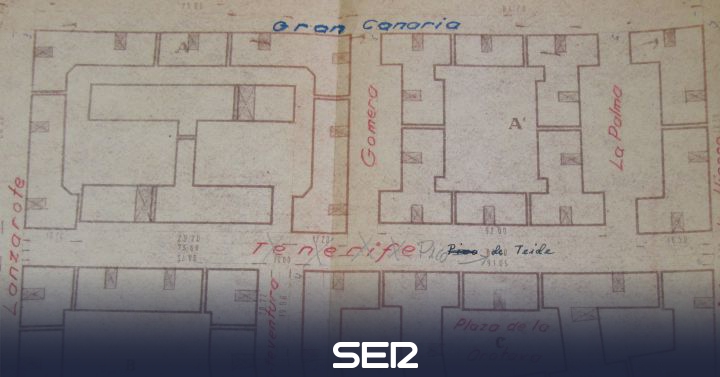The name of the Canarian island of La Palma, so topical these days due to the volcanic eruption that it is suffering, during the 60s marked a street in our city curiously linked to another catastrophic event such as the flood of 57. As we have told in this space many times, after the flood, the city of Valencia transformed its appearance at the rate that marked the diversion of the Turia riverbed to the south, known as Plan Sur, a project that led to a new conception of the city , rearranged from the great hydraulic work, which affected the entire infrastructure of services and communications, promoting the construction of new housing estates to accommodate the affected residents. The neighborhoods and streets born as a result of the catastrophe, and others that at that time lacked labeling, also welcomed a new type of urban onomastics, the toponymy of gratitude, created expressly to glorify the name of nations, institutions, peoples and personalities who had helped the Valencians in their particular war against mud.
Iframe code has been copied to clipboard
–
–
As in Fuensanta, another of the neighborhoods consecrated to the toponymy of gratitude was the Girón de Velasco Housing Group, built in Malvarrosa by the Social Welfare Institution of the Naval Union of Levante to house the workers of its shipyards. Projected before the flood, its completion was delayed because of it, and the onomastics of its streets were adapted to the moment, being labeled with “names belonging to the Canary Islands in gratitude for the help received as a result of the flood.” Thus, the streets that surround the blocks were labeled Calle Lanzarote, Calle Gran Canaria and Calle Isla de Hierro; Pico Teide la central street; Fuerteventura street, Gomera street and La Palma street the interiors, and Plaza de la Orotava the interior of the group. At first, the proposal included the name of the central street with the name of the Canarian capital, but the Santa Cruz de Tenerife street had just been labeled in the Virgen de los Desamparados Group, perpendicular to the Avenida del Cid.
Therefore, all the islands and main Canarian symbols thus received the homage of València. But everything went wrong a few years later, when the City Council realized that there was already another street in the city called calle de la Palma. It is a small alley in the Carmen neighborhood, which leads to the Plaza del Carmen itself coming from the murtereta, whose origin dates back beyond the 18th century and which would refer to the typical palm tree of the Valencian landscape that would be located on its route . This duplication of denominations, calle de la Palma (tree) and calle de la Palma (island), was corrected by the administration in the worst way, changing the name of the street dedicated to the island by a new denomination: calle de Las Palmas, name of the capital of the island of Gran Canaria, thus stripping the deserved tribute to the natives of the island of La Palma, when precisely the best solution to differentiate both streets would have been to add the word “island”, as he took over the adjoining Isla de Hierro street without going any further.
Perhaps, now that the victims are the inhabitants of that beautiful Canary Island, it would be a good time to restore the street to its original meaning and pay homage of gratitude to La Palma.
–


